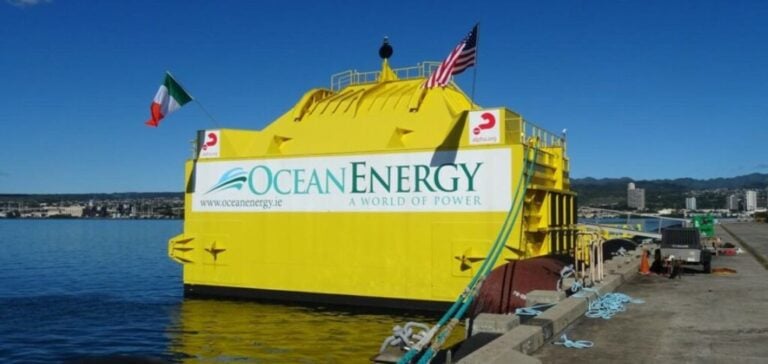Ocean Energy USA LLC, a subsidiary of Ocean Energy Group Ireland, announces the successful deployment of its OE-35 hydrokinetic converter in Kaneohe Bay, Hawaii.
The device, with a potential capacity of 1.25 megawatts, represents a significant advance in marine renewable energy.
The OE-35, weighing 826 tonnes and measuring 38 x 18 meters, is installed at the US Navy’s Wave Energy Test Site (WETS) on the windward coast of the island of Oahu.
Following on-site testing and commissioning, the device will be connected to the Hawaiian power grid via an undersea cable in the coming weeks.
It should make an effective contribution to the development of renewable energies in Hawaii.
Background and Financing
The project, valued at 12 million USD, is co-financed by the Office of Energy Efficiency and Renewable Energy of the US Department of Energy and the Sustainable Energy Authority of Ireland (SEAI).
This initiative is part of a cooperation agreement between the US and Irish governments to develop marine hydrokinetic technologies.
The WETS test site, located north of the Mōkapu peninsula, was chosen for its strategic relevance and ideal marine conditions.
The OE-35 was towed from Honolulu to its current location on July 19, marking a crucial milestone in the project.
Technology and Innovation
The OE-35 hydrokinetic converter is designed to transform wave energy into electricity, offering an innovative solution for renewable energy production.
With a production capacity of up to 1.25 megawatts, the device could make a significant contribution to reducing carbon emissions.
Tony Lewis, Ocean Energy’s Technical Director, explains that this project is the result of over fifteen years of design, testing and construction.
The world-class OE-35 device aims to provide a viable and sustainable solution for generating electricity from wave energy.
Perspectives and implications
The successful deployment of the OE-35 paves the way for a new era in marine renewable energy.
By connecting this device to the Hawaiian power grid, Ocean Energy USA LLC is demonstrating the viability and effectiveness of this technology for large-scale use.
It also demonstrates international cooperation in the field of renewable energy, with substantial support from the US and Irish governments.
The results achieved at Kaneohe Bay could serve as a model for similar projects around the world, reinforcing the global commitment to clean energy.
The OE-35 project could also have significant economic implications, creating new opportunities in the shipbuilding, maintenance and marine infrastructure management sectors.
This could stimulate innovation and encourage investment in similar technologies.
The successful installation of the OE-35 by Ocean Energy USA LLC marks a decisive step in the exploitation of hydrokinetic energy.
This project, supported by strong international cooperation, could revolutionize the global energy landscape by providing a sustainable and efficient solution for power generation.






















